Back to the Managing Our Forestlands Main Page
Livestock and Forestry Research Station
Batesville, Ark.
The Livestock and Forestry Research Station, or LFRS, was established by the Arkansas General Assembly in 1937, making it the fourth oldest branch unit of the Arkansas Agricultural Experiment Station. The land was purchased by Independence County and deeded to the University of Arkansas Board of Trustees to be used only for the purpose of maintaining a research station. The original allocation was one tract of 2,155 acres for land use, livestock, pasture, and crops studies of economic importance to the area, and another of 887 acres mostly in virgin hardwoods.
The initial missions of LFRS were to study land use through livestock and forestry and demonstrate erosion control and land reclamation of the sloping soils that were used for cotton or timber production in the Ozark limestone region. Over time, the missions have evolved to also include forage and beef cattle research, which complements the most common land use in the surrounding area.
Source: https://aaes.uada.edu/research-locations/livestock-forestry-station/
The Livestock and Forestry Research Station, also known as the Batesville Station, is divided into two tracts, the Station Tract and the River Hills Tract. The Station Tract is where the cattle operations are located, as well as slightly more than half of the forested area. The River Hills Tract is an entirely forested tract of timber 6 miles to the west of the Station, bounded by the White River to the west.
Goals
The primary objectives for the forest resources at LFRS include:
- Management of upland hardwood forests for multiple objectives
- Multiple objective management of upland hardwood sites is often the best approach for forest landowners. This style of management emphasizes many objectives (timber, wildlife, aesthetics, and others) to maximize benefit from the woodlands.
- Improve overall forest health and productivity
- Forest management to improve health and productivity includes promoting and maintaining desirable species for management. In the case of upland hardwoods, this management is centered on promoting tree species and stand densities suited to the site conditions.
- Management of shortleaf pine (Pinus echinata) and oak mixed forests
- Historically, forests in the Ozark region contained both upland hardwood and shortleaf pine systems. The goal is to explore how to recreate and benefit from those woodlands.
- Management of loblolly pine in North Arkansas
- Loblolly pine (Pinus taeda) does not naturally occur in the Ozark region. However, there is interest among some forest landowners to plant loblolly for its rapid growth and timber value.
- Improve forest habitat for upland wildlife species
- Management to improve wildlife habitat in upland areas includes thinning, prescribed fire, and maintaining openings or gaps in woodlands.
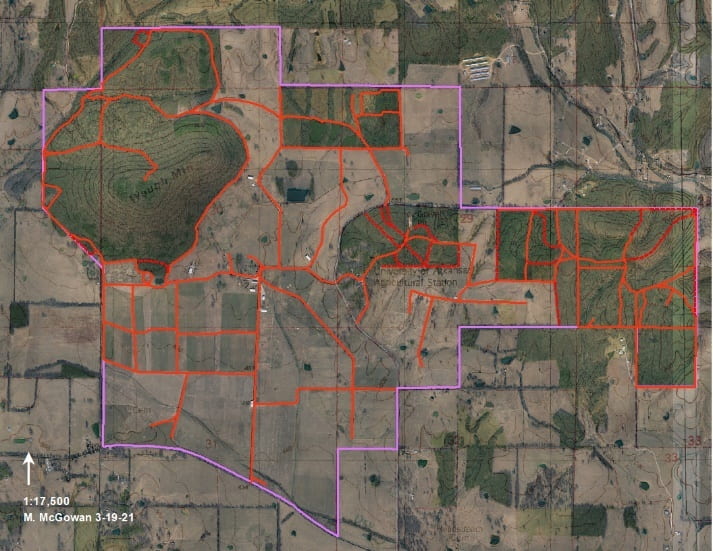
Fig. 1. The Station Tract

Fig. 2. The River Hills Tract
2019 Arkansas Forestry Association Tree Farm of the Year
The LFRS holds the distinction of being the Arkansas Forestry Association’s Tree Farm of the Year in the Non-profit category for the year of 2019, following awards for the Tree Farm Program’s District Winner in 2018 and 2019.
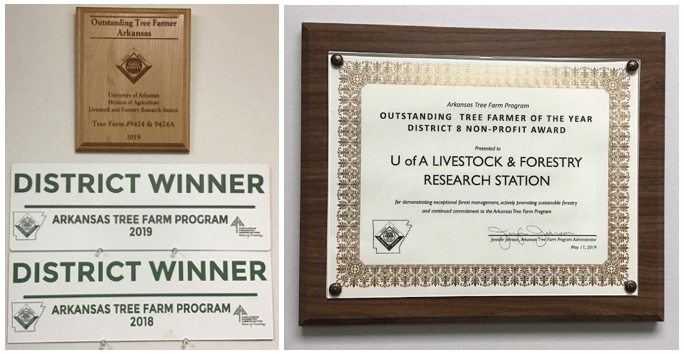
Fig. 3. In 2018 and 2019, the Livestock and Forestry Research Station was named the district winner of the non-profit category of the Arkansas Tree Farm Program and was named the non-profit Tree Farm of the Year in 2019.
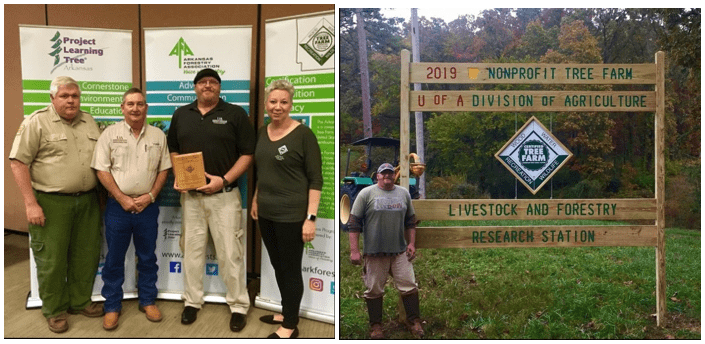
Fig. 4. Left: Livestock and Forestry Research Station Director Don Hubbell and AES Forester Mike McGowan accepting the award for the AFA’s 2019 Tree Farm of the Year in Little Rock. Right: AES Forester Mike McGowan with the AFA’s Award sign)
Past Management
A) River Hills
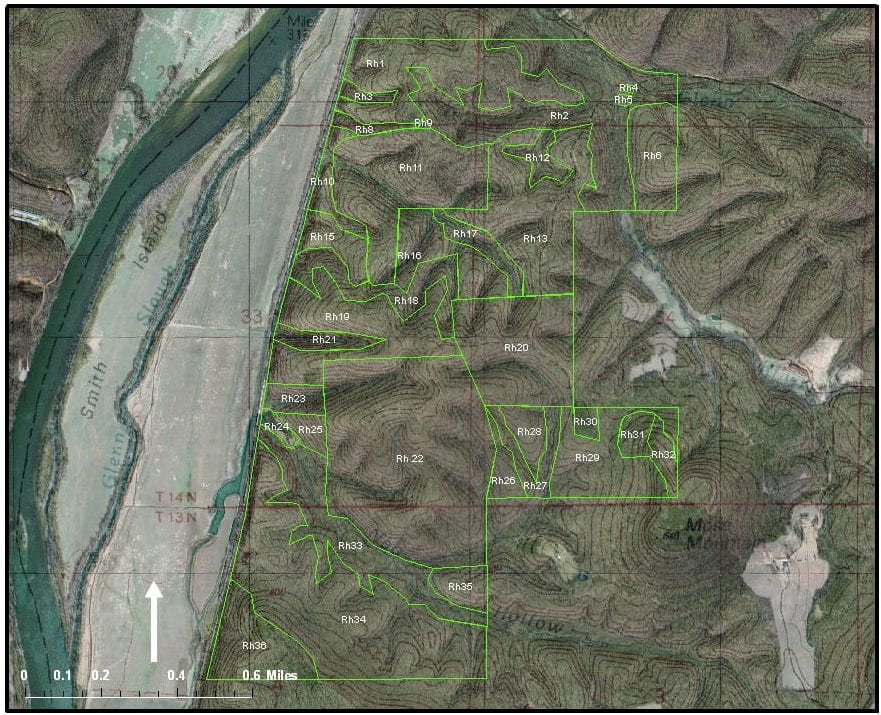
Fig. 5. An aerial map of the River Hills tract.
There was some form of harvest in the River Hills Tract in the 1960s-1970s, though the details are unknown. Several pine plantations (RH9, RH30, and a small tract which is included in RH19) were established around that time, requiring at least a clearcut harvest of those areas.
There was also a harvest of 60 acres in RH11 in the mid-90s. This harvest didn’t follow modern accepted silvicultural practices, but over time the remnants were able to grow into something with marginal value, and there was a healthy amount of oak regeneration on the forest floor. This tract was treated as a shelterwood. The stand was burned twice, a contractor injected it, and then the shelter was removed in the winter of 2018-2019.
Kyle Cunningham, extension specialist and associate professor of forestry, conducted his Ph.D. research project in the River Hills Tract St RH22, measuring the effects of different sunlight intensities on photosynthetic rates in hardwood seedlings following a shelterwood harvest. Injection work was completed and the initial shelterwood harvest was conducted in the winter of 2009-2010. In 2013, the area was burned, and measurements continued on the oak seedlings for five years. The shelter trees were removed in 2015, with measurements on permanent plots being followed to evaluate stand development through time.
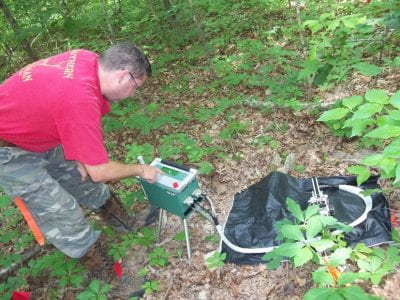
Fig. 6. Kyle Cunningham, extension specialist and associate professor of forestry, collects data while in the forest.
The next harvest was another shelterwood harvest, in RH33, RH34, and RH35. The western half of the stand was injected, the stand was marked for thinning (Fig. 7), and the initial harvest was conducted in the winter of 2010-2011. After 5 years, low levels of oak regeneration required a second controlled burn. The oak seedling count was sufficient following that burn to allow for removal of the shelter in the winter of 2019-2020.
The Red Gate Sale, RH26-30, was another shelterwood operation. Injection was done in 2011, the initial harvest was in 2012, and the shelter was removed in 2017. This stand was never burned. The pines in RH30 were thinned to 70 square feet of basal area per acre.
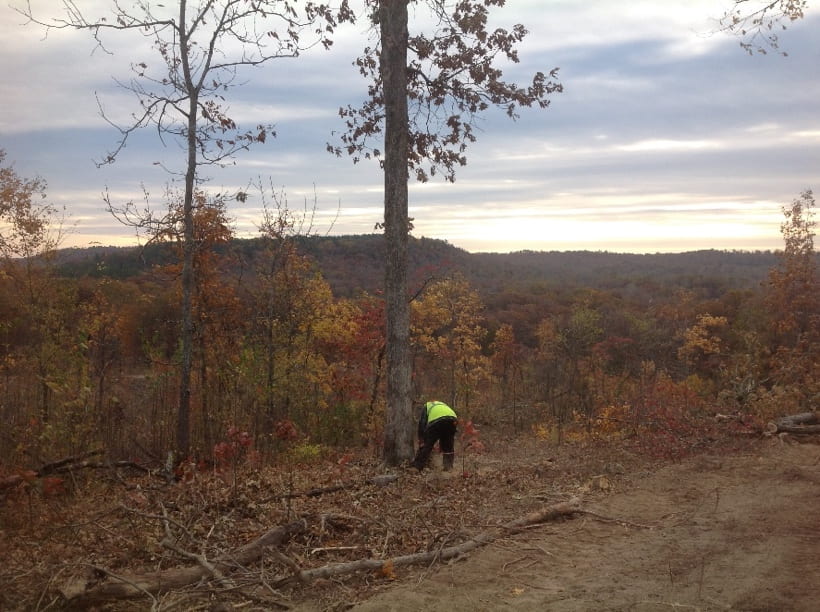
Fig. 7. A tree is marked for thinning as part of the shelterwood harvest in RH33, RH34, and RH35.
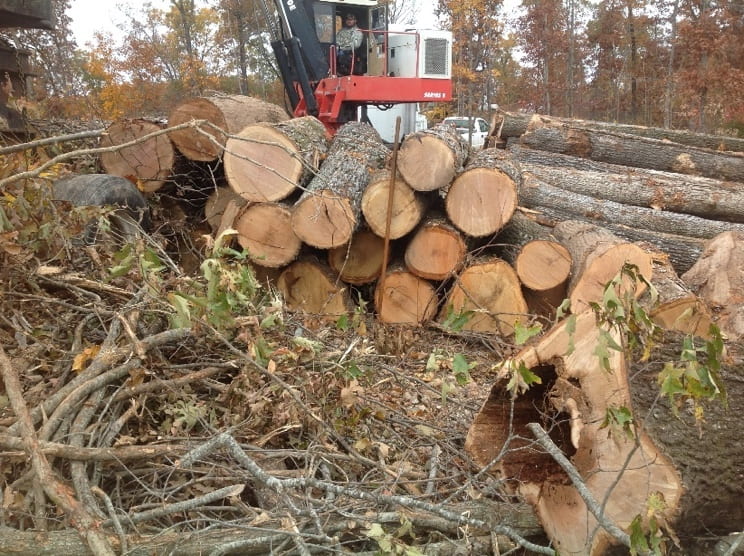
Fig. 8. Timber from the Red Gate Sale.
The Midstory Timing Control Study is underway, although harvesting is finished. The tract was divided into blocks, and the blocks were injected 2 years prior to harvest, 1 year prior, year of harvest, and the year following. A control block is located to the east in RH6. The track was marked in 2019, and the initial harvest took place in the fall and winter of 2019. The shelter will be removed in 2025, if oak regeneration is sufficient.

Fig. 9. A detailed view of the northeast corner of the River Hills Tract.
B) Station Tract

Fig. 10. An aerial map of the Station tract.
The Station Tract consists of four distinct areas: Waugh Mountain is comprised of 400 acres in the northwest; the Thicket is a 60-acre stand just across the pasture from Waugh Mountain heading east; the 80-acre Office Forest is located next to the station headquarters, almost in the middle of the map; and the approximately 280-acre Panhandle Forest is the tract that looks like a pan’s handle to the east of the pastures.
The first harvest on the Station Tract for which data exists was in 2007, when about 15 acres were cleared in the thicket to create the Poultry Litter Study, and then planted to pine before being fertilized using different products and the growth measured.
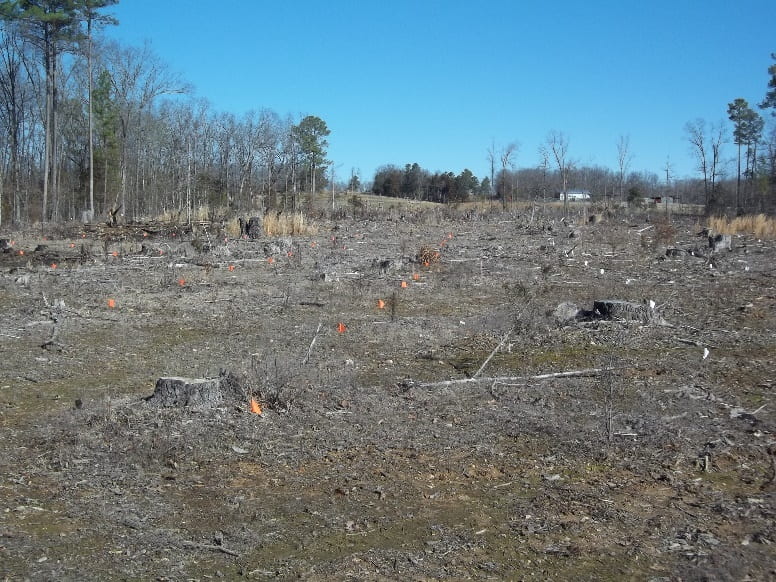
Fig. 11. Approximately 15 acres were cleared to create the Poultry Litter Study.
The next major project on the Station Tract occurred in 2009 with the creation of the Office Forest Management Demonstration Area or OFMD. This demonstration showcases five kinds of harvests that might be seen in the area and included planting a pine varietal study at the Office Forest and the Thicket where the genetics of pine seedlings of varying classes are being tested by growing them next to each other and seeing which one performs the best. There has been a significant amount of field days, and 4-H, Future Farmers of America, and other valuable programming conducted at the OFMD.
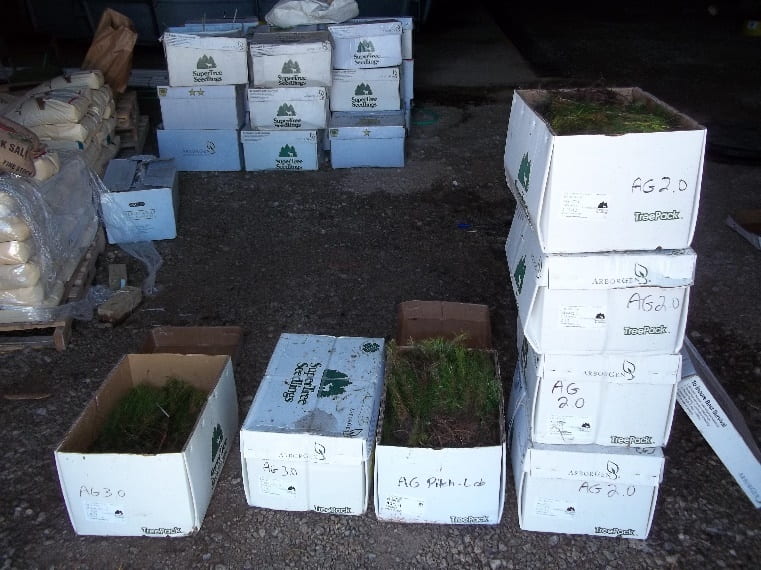
Fig. 12. Boxes of seedlings as part of the Office Forest Management Demonstration Area.
Timber management on the Station Tract was renewed in the winter of 2010-2011 when a shelterwood research project was established at Waugh Mountain in ST A6 (see Fig. 19). The project showed the effects of injected versus uninjected shelterwoods, as well as with and without fire. The initial harvest took place in 2011-2012, measurements were recorded yearly, the shelter was removed in 2017, and measurements were conducted for three growing seasons, ending in 2019.

Fig. 13. A controlled burn as part of the shelterwood research project established at Waugh Mountain.
In 2012-2013, the “Diaper Fire” project was harvested in A1 and A3 on Waugh Mountain (see Fig. 19). The Diaper Fire is so named because in the late 1980s, a neighbor was burning used baby diapers and sparks from their blazing trash pile burned onto the station and damaged the forest. The resulting sale thinned a couple of pine plantations and removed the damaged trees to improve forest health. This project is scheduled for another harvest in 2027.

Fig. 14. Timber was harvested from the Diaper Fire project in 2012-2013.
2014 saw a harvest operation in the Panhandle (St C14-19, see Fig. 19). Several harvest methods were used: a timber stand improvement harvest, a crop tree release, a shelterwood, a clearcut, and a variation of an every-third-row pine thinning. The shelterwood on this sale was hacked and squirted, but wasn’t burned until 2020, after several years of minimal oak regeneration. It is scheduled for harvest again in 2024.
In 2015, AES harvested the Oak Savannah Demonstration on Waugh Mountain (St. A19, see Fig. 19), along with removing the shelter on the shelterwood demonstration. The basal area was reduced to an extremely low 30 square feet of basal area per acre in order to encourage the growth of grasses. Repetitive, regular burns are required for this demonstration. The pine plantations on the south face of the mountain were also thinned.
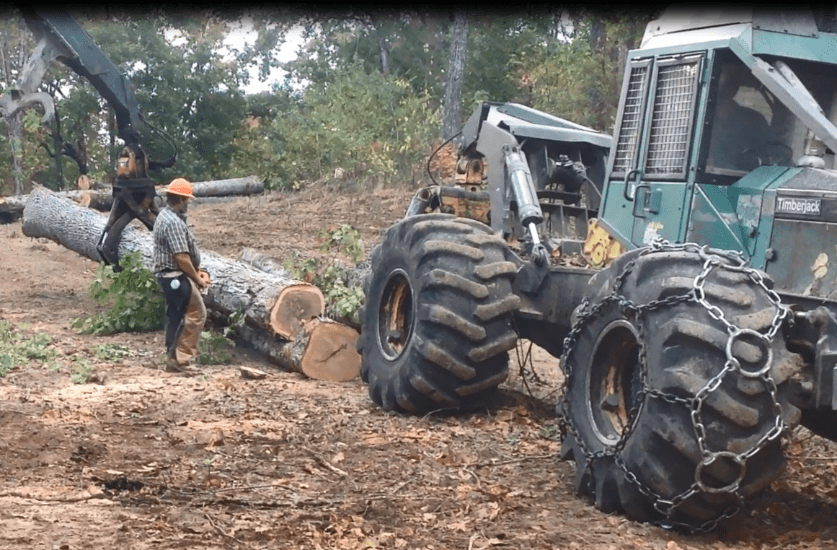
Fig. 15. Several harvest operations occurred in 2014-2015.
Forest St C9 was clearcut (see Fig. 19). A study by Dr. Cunningham examining mixed pine and oak plantings is underway in the stand. The stand has been burned, and chemical has been applied to clean up a planting location.
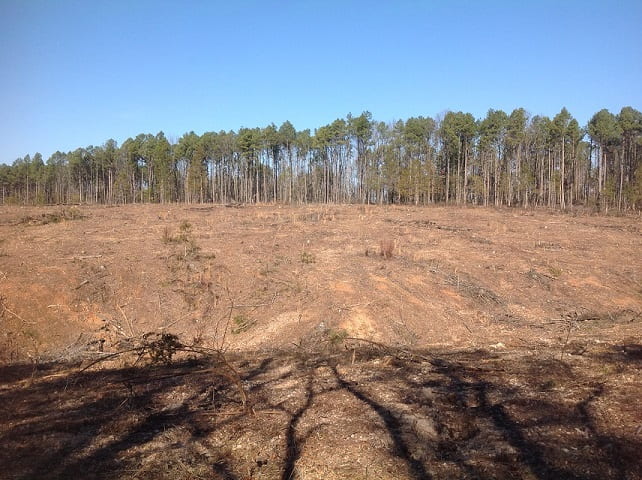
Fig. 16. Forest St C9 was clear cut as part of a study by Dr. Cunningham examining mixed pine and oak plantings.
Current Management
A) River Hills Tract
The current project at the River Hills Tract is Dr. Cunningham’s White Oak Sustainability Study. The study area was inventoried, followed by midstory removal by a private contractor. The marking was done by AES personnel, and there is an active timber sale contract for the initial shelterwood harvest that is to take place during the winter of 2021-2022. The purpose of the project is to demonstrate sustainable harvesting practices for highly valuable white oak forests in the Ozark region.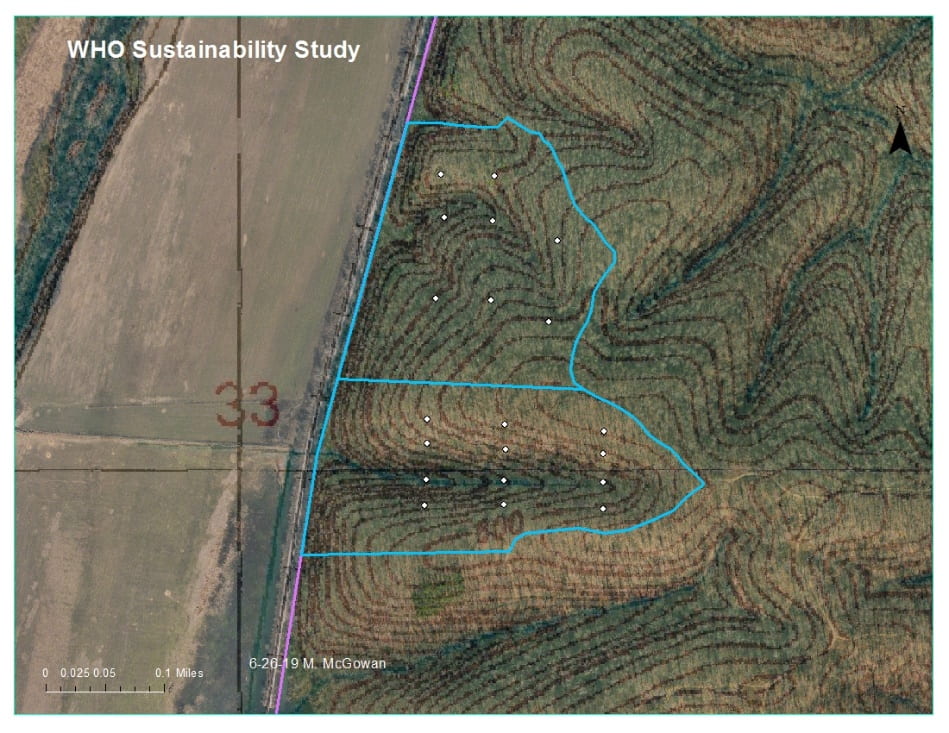
Fig. 17. Dr. Cunningham is conducting a grant-funded White Oak Sustainability project in the River Hills Tract.
Future Management
A) River Hills Tract
The bulk of the River Hills Tract is already in active management, where the shelterwood process has either been initiated or finished. The map in Fig. 18 shows the only remaining unmanaged area (teal), surrounded by finished (green) or active projects. This area has been burned twice, and injection done in 2018 and 2019. It will then be divided in half so that the initial shelterwood cut will take place in two sales, occurring in 2022-2023 and 2023-2024.
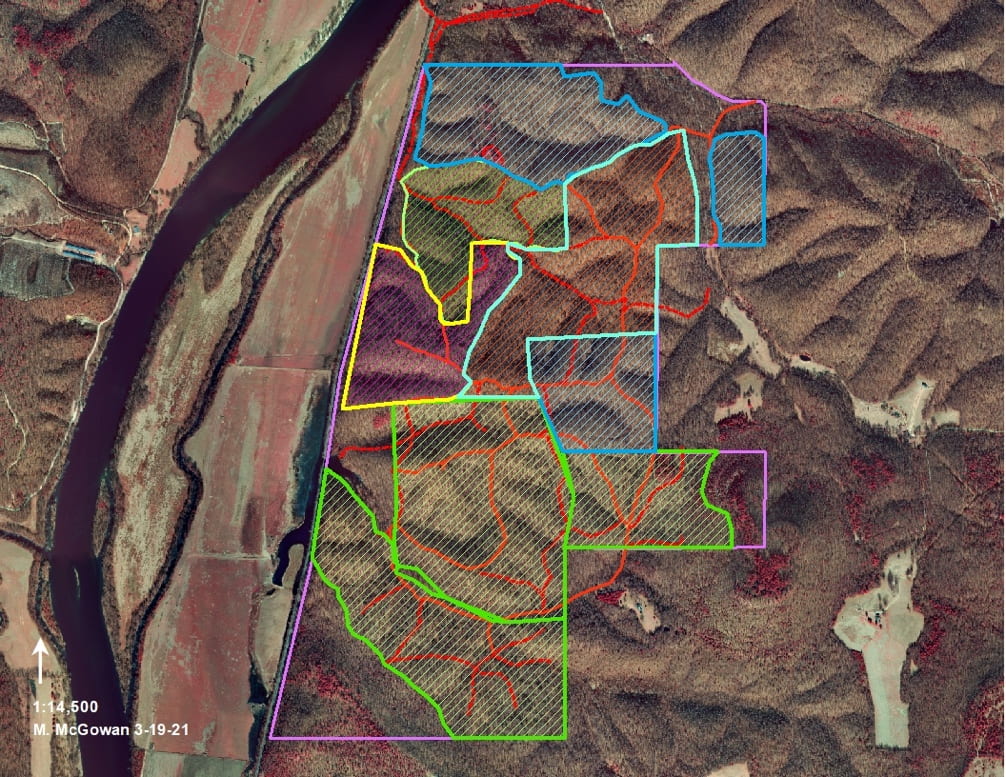
Fig. 18. The only remaining unmanaged area in the River Hills Tract is highlighted by a teal outline.
B) The Station Tract
Management for the Station Tract will be rekindled in 2026, when AES will thin the Panhandle Forests (teal), and the “Goat 40s” within the Panhandle Forests, which have been injected and one-third burned. In 2027, AES will thin the pines on the north side of Waugh Mountain and either thin or begin the shelterwood process on the hardwoods in St. A1 and A3.
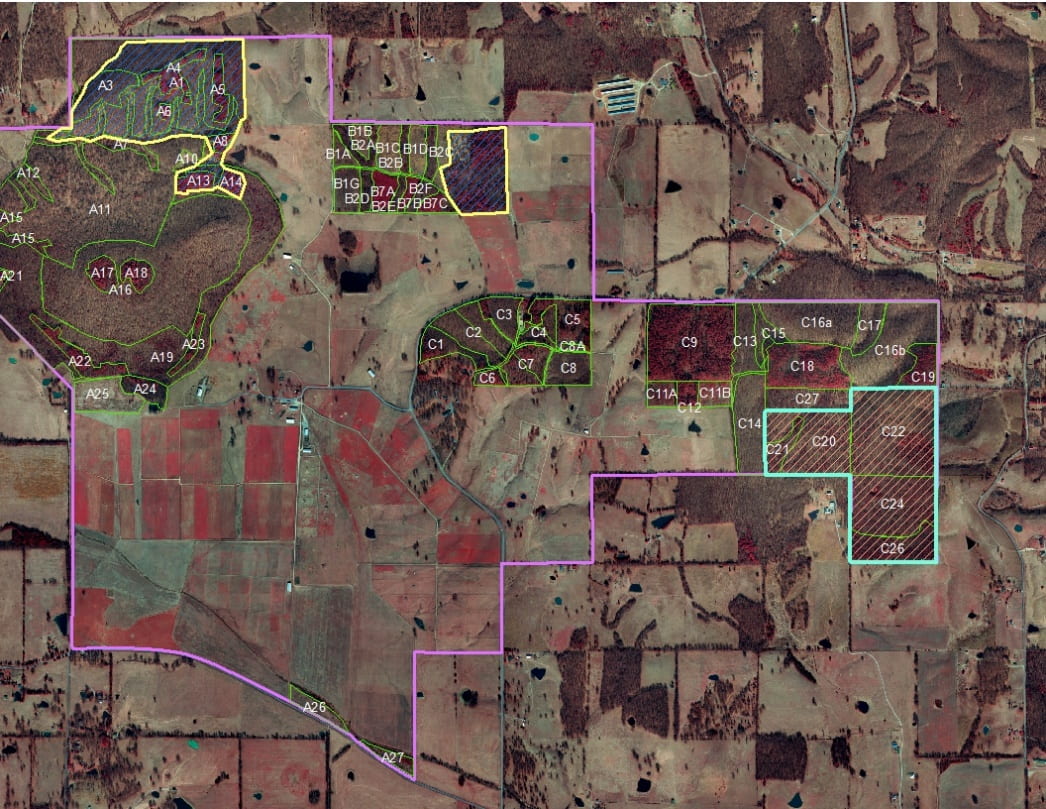
Fig. 19. A map of the Station Tract showing the division of tracts into management blocks.
While the major goal among management objectives at the LFRS is creating and maintaining a healthy, productive upland forest, AES will employ the concept multiple-objective management at the station. Creating and maintaining wildlife habitat is among those objectives. In addition to the harvests described, AES will incorporate the following practices:
- Conduct prescribed burns on up to 200 acres annually. AES has an active prescribed burn program to conduct controlled burns each year during the dormant season. These “cool season” burns reduce the risk of potential damage to the hardwood trees, while controlling undesirable woody species, increasing oak seedlings, and increasing high nutrient food sources for wildlife species.
- Maintain the designated open oak woodland area on Waugh Mountain (Figure 2-20). This area has been designed to reduce the number of trees from what AES would typically maintain in the LFRS stands to create a much more open woodland setting. The idea is to focus more on cover and browse for wildlife than production in this area.
- Maintain oaks for hard mast (hard nuts and seeds such as acorns) production is not only a timber objective, but a critical factor in providing a quality food source to wildlife species. All forest management operations at LFRS are designed around maintaining a significant oak component in hardwood stands.
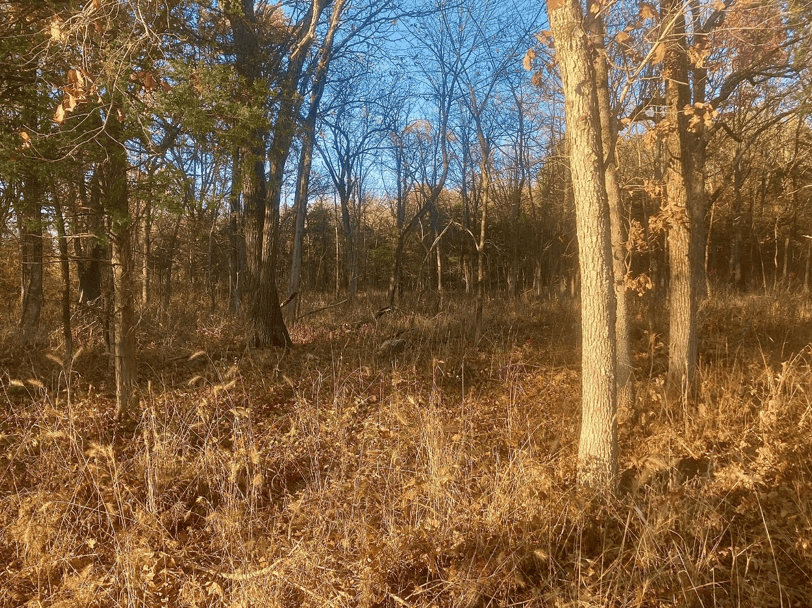
Fig. 20. The Open Oak Woodland at Waugh Mountain.
